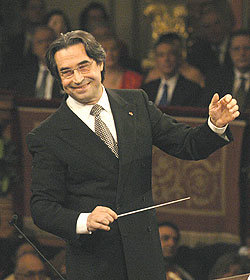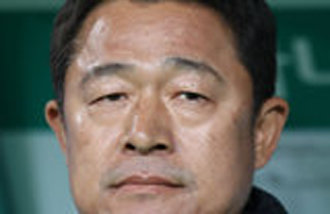Muti and the Orchestra della Scalla Comes to Korea in September
Muti and the Orchestra della Scalla Comes to Korea in September
Posted August. 30, 2004 22:09,

Music aficionados across Korea are focusing their attention on the upcoming September tour of celebrated conductor Riccardo Muti and his instrument, the Orchestra Filarmonica della Scalla. This is the second time the Naples-born maestro and the Orchestra della Scalla have visited Korea, after their first tour in 1996.
The main piece for the first days program, on September 4, is Tchaikovskys symphony No. 5 in E minor; the second days performance is anchored by Brahmss symphony No. 2 in D major. Not only are both pieces distinctive masterworks that have left their respective marks on the history of symphonies, but also Mutis own digital recordings of them, made with the Philadelphia Orchestra in the early 90s, are numbered among the classics of classical albums. It would be well worth the time and effort to get a little preview of the intensity of the September concert by listening to the CD renditions of these symphonies.
Tchaikovskys symphony No. 5 was recorded in 1991 and released by EMI the following year. The string section is thickly stacked, striking a superb balance with the clear, bright tones of the brass instruments as they burst forth with steady solidity. The highlight of the performance comes at the end of the fourth movement, when the Fate motif makes its reappearance in full orchestral grandeur. As the strings march boldly onward at a slightly reduced tempo, above them the trumpets break out in a radiant triumphal song. The whole creates an overwhelming sense of space, as if one were looking down on a march through a broad thoroughfare from a vantage point high in the sky.
Brahmss symphony No. 2 is famed for its brilliance and crispness, unlike his other three. Recorded for Philips in 1990, Mutis rendition emphasizes the clear, refreshing colors of the string section, like the broad strokes of a watercolor painting. In particular, the fourth movement, brimming with fast-paced energy, sets off the conductors extraordinary sense of balance. The harmonious interplay between the string and wind sections, swelling and subsiding in identical timbres and maintaining a seamless equilibrium, is exquisite.
In 1990 and 1991, when the two albums were recorded, Muti was serving as musical director for both the Philadelphia Orchestra and the Orchestra Filarmonica della Scalla. Shortly afterwards, in 1992, Muti would leave the Philadelphia Orchestra to devote his energies to conducting the Orchestra della Scalla. In a recent phone interview, Muti praised his beloved ensemble by stating, The Orchestra Filarmonica della Scalla is a premium-class orchestra that brings together the balance of German-Austrian philharmonics and the elegant, flowing strings distinctive to Italian philharmonics. This is why in September we may expect a performance that surpasses even the emotional force of his famous recordings.
The concert will be held at 7:00 p.m. on September 4 at the Eoulim Theater in the Goyang Sports Complex & Park, and at 4:00 p.m. on September 5 at the Concert Hall of the Seoul Arts Center. 02-749-1300
Yoon-Jong Yoo gustav@donga.com
Headline News
- Iran blames US sanctions for helicopter crash that killed president
- Pres. Yoon vetoes investigation into death of marine
- “Croatia Holds a Business Forum in Seoul…Looking forward to the development of trade relations”
- Samsung names new chief for semiconductor business
- Seoul City plans to expand welfare benefits







